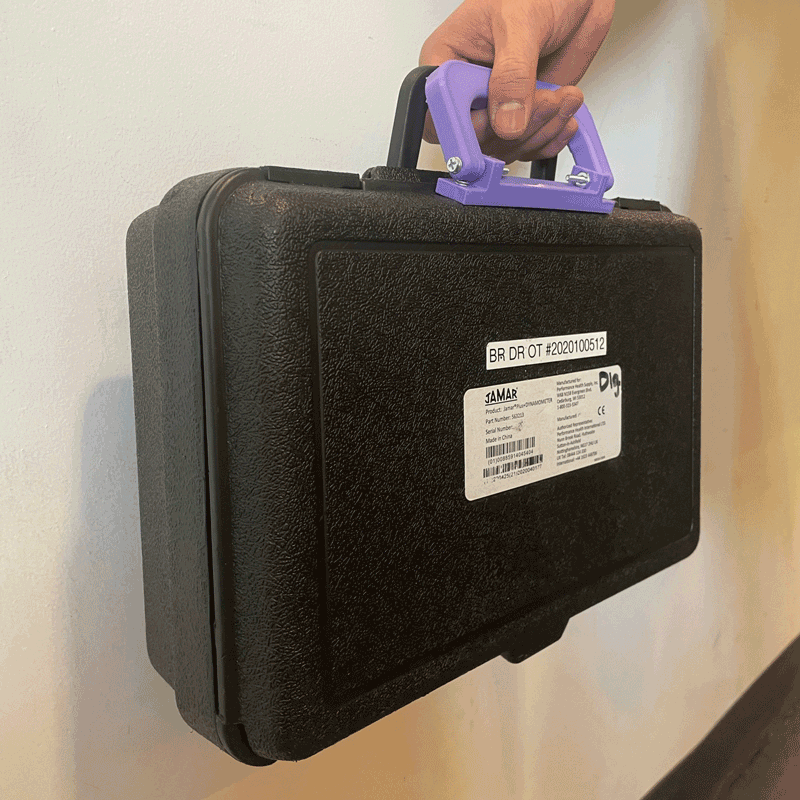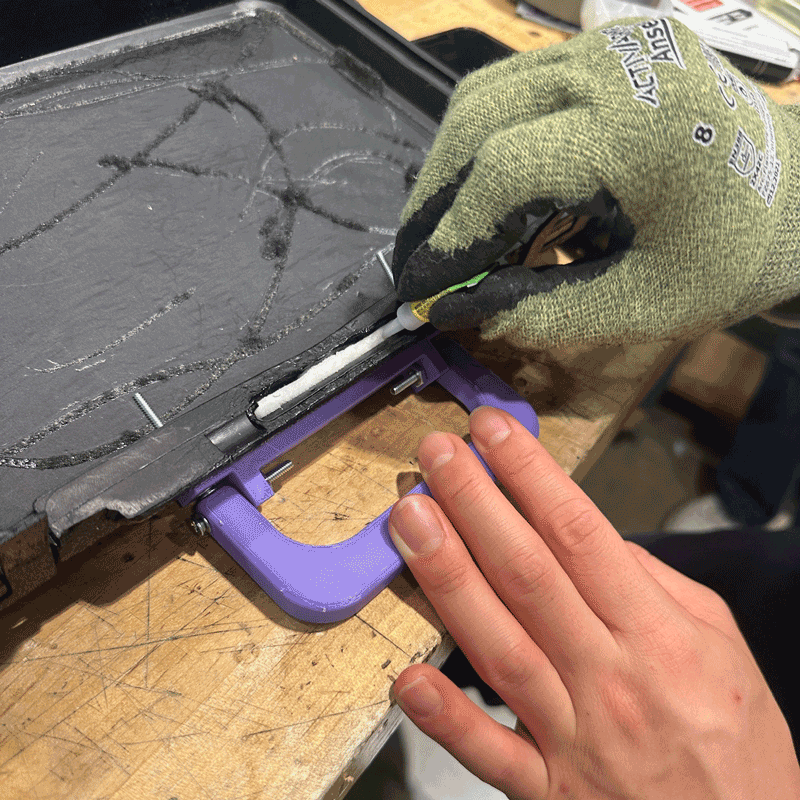A Low-Cost Solution to Prevent Broken Medical Devices
DTC students collaborated with Shirley Ryan AbilityLab to design a solution to prevent broken dynamometers.

For occupational therapists at the Shirley Ryan AbilityLab, hand dynamometers — which measure grip strength — provide a key indicator of a patient’s recovery.
Not only can these devices show the improvement rate after a hand injury, they can also measure overall vitality. Research links a decline in grip strength to a wide range of health issues in older adults, including heart disease and cancer.
But the hand dynamometers at Shirley Ryan AbilityLab would keep breaking. The issue wasn’t patients — in fact, patients rarely drop the devices. Instead, the devices are left on tables and are accidentally knocked to the ground, or the faulty latches on their cases open during transport, sending the dynamometer crashing to the floor. Fixing them costs hundreds of dollars.
And because Shirley Ryan AbilityLab has 50 of these devices on hand, “it gets expensive very quickly,” said Joann Prekezes, a former occupational therapist at Shirley Ryan AbilityLab who estimated she used a dynamometer 10 times per day.
Prekezes brought the problem to students in the Design Thinking and Communication (DTC) course, where first-year students work in teams to design solutions to problems from real community partners. Over the winter 2024 quarter, she hoped they would design something akin to an iPhone case that would constantly protect the device.
What she and her colleagues got from one DTC team was a different solution altogether — one that was simple, low-cost, and easy to implement.
“When I brought their prototype back to work, the excitement was over the top,” Prekezes said. “Everyone said, ‘Why didn’t we think of this before?’”
Finding the real problem
That DTC team included four first-year students — Evan Le, Chris Leung, Charlie Single, and Riley Thornburgh — who were excited to dig into the process. They interviewed Prekezes about the problem and began brainstorming solutions.
It quickly became clear an iPhone-like case wouldn’t be feasible, but a few other ideas seemed like they might work, including suspending the dynamometer onto a cart, or attaching a strong wrist strap to it. Prekezes was open with her feedback. The cart wasn’t feasible — patients often use dynamometers while in bed, which meant there wasn’t space for a cart, and it would have a high materials cost. And the device already had a wrist strap. The dynamometer was so heavy, though, that when dropped, it would often still fall off the user’s wrist.
“Their questions blew me away, and any feedback I gave them, they took it well,” Prekezes said. “I loved their energy. They were pretty determined to figure something out.”
Shirley Ryan AbilityLab provided dynamometers to DTC teams to help them study the problem, but this team took a different approach, said Kathleen Carmichael, professor of instruction in The Cook Family Writing Program and co-instructor of the course.
“They are first-year engineering students, which means they come in without assumptions,” she said. “They listened to the details of this strange point of failure — when the dynamometers accidentally dropped out of their cases — and they stopped looking at the dynamometer and started looking at the case itself.”
That, the team thought, seemed like the real problem. “It was one of the main points of failure,” Single said. “The latches weren’t being latched properly, or the cases were poorly made and wouldn’t always hold. So we started from there.”

Instead of building an entirely new case, the team wondered if they could retrofit the current case to work better. What if the closure of the case didn’t just rely on the latches? Perhaps magnets might work better?
The team ordered magnets and tested both the strength needed and potential placement within the case. The magnets needed to be strong enough to hold the case closed but not too strong that the therapists couldn’t open the case when needed.
“It was a lot of trial and error,” Thornburgh said. “In the end, we found a pretty simple process that wouldn’t take too long to retrofit the cases.”
They found that two thin magnets could be easily inserted into a hollow part of the case’s lip. The magnets could be secured with resin that could dry overnight. The team’s design also included adding a second handle to the case, which would both increase the chance that the case stayed closed during transport and make it easier for a therapist to open the magnetic seal.
“This was a project that had very clear implications,” said Kiki Zissimopoulos, assistant professor of instruction and co-instructor of the course. “It affected the therapist’s ability to do their job well and had important implications for the rehabilitation of patients. The team worked really well together, and that was great to see. They picked up on this idea that was simple but very powerful, and you can imagine a lot of instances where this kind of approach would be beneficial.”
‘The design blew us away’
The team at Shirley Ryan AbilityLab liked the design so much that its engineering department is determining whether it’s feasible to do similar retrofits to all of their dynamometer casings.
“The magnets are great, and I love the second handle,” Prezekes said. “The design blew us away.”
For the DTC team, the project was a chance to work with a real project partner to implement an important design that could make a difference in people’s lives. And they found they couldn’t do it without working together as a team.
“The whole team worked very well together,” Single said. “It gave me a foundation of what group work should look like.”
